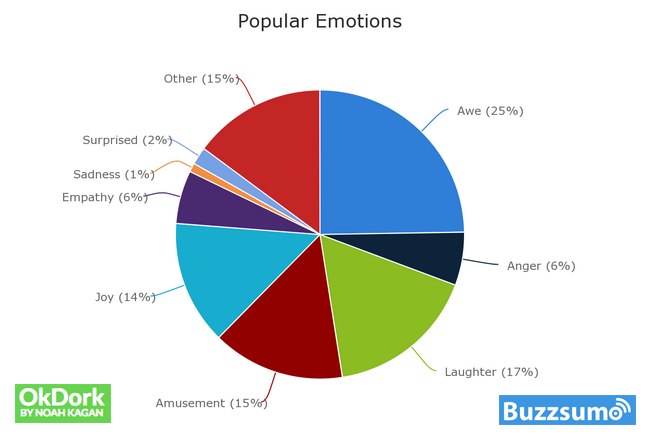For all the talk of injecting personality into content, humour is still a difficult trick to pull off
Philip Hammond, the chancellor of the exchequer, stands in the Houses of Parliament to deliver his Autumn Budget speech. A nation’s journalists wait, pens poised, as opposition MPs look on expectantly. Hilarity ensues…
It might sound a bit unlikely, but Hammond’s speech was notable for its reliance on humour. Jibes about Jeremy Clarkson, Theresa May hand-delivering cough sweets, a ‘merry Christmas’ to the news that the duty on most alcohol will be frozen.
All of which got Content Desk thinking about humour in content. Is it ever really a good idea?
A human response
A recent survey for BuzzSumo looked at the top 10,000 most shared articles across the web. It mapped each one to an emotion. Here’s what they found:

In first place, with 25%, is awe. Second, with 17%, is laughter and third is amusement (15%).
‘Funny content gets shared’ isn’t really a surprise. Although many people use social media to engage with wider, politically sensitive issues (such as the Budget), the majority will still simply be checking in to Facebook, Twitter, etc, for entertainment. So that video of a cat and owner fist bump will always beat the launch of your whitepaper.
But that doesn’t matter. We’re not talking about advertising or even B2C content marketing, where reach is everything. Effective B2B content marketing, as we will never tire of saying, is not about shares – it’s about the right shares.
Judge the audience
If you’ve sat in a meeting and decided that the audience for your content is ‘as many people as possible’ then your strategy is flawed. B2B content marketing is about building a relationship with the audience that will find your content the most useful.
Engagement is, quite understandably, the number one topic discussed by content marketers everywhere, and usefulness – not humour – is a more efficient way of getting that engagement. What do you want to do? Raise a smile as people scroll past your content, or spark enough interest for a click?
Don’t undermine your own content
At the risk of sounding like a humourless drone, using humour in your content comes with many risks – not least undermining the content your organisation is producing.
To return briefly to Hammond, there were plenty of negative comments after the speech wondering what was so funny about a speech aimed at combatting austerity, aiding a health system under strain and ending homelessness?
The Prime Minister and the Chancellor are messing about trying to do jokes in the Budget speech. How about they announce proper pay rises for all public sector workers instead? #budget17
— Dave Prentis (@DavePrentis) November 22, 2017
It brought to mind another recent misjudgement, that of Facebook CEO Mark Zuckerberg, whose launch of a virtual reality platform was marred by unintentional but misguided flippancy around the devastation in Puerto Rico.
Why run this risk with your own content? Humour is a great tool for engagement, but get it wrong and you could lose reliability and trustworthiness with your audience. And once that’s gone, it’s virtually impossible to get it back.
Humour or human?
Ultimately, the question of whether or not to use humour in a piece of content shouldn’t even be raised. It shouldn’t need to be.
A successful piece of content is one where the human voice shines through; it’s a piece that hasn’t been edited by committee. That human voice will be informed, useful and engaging. And an engaging writer will be skilled enough to present points in as entertaining a way as they see fit. Crowbarring in a few memes to a brand’s social media account is no path to building trusted, sustained business relationships.
Work out who you are speaking to, get a skilled, engaging content creator on the case and focus on being as useful as possible. Not very funny, but true.









